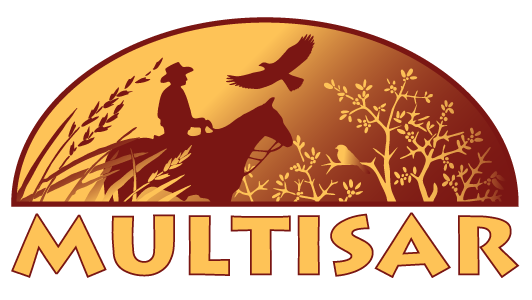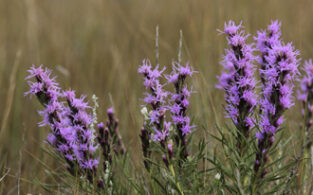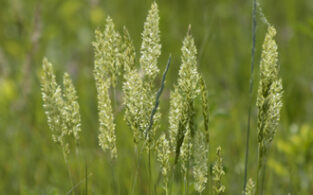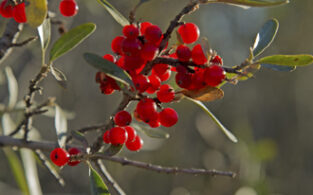Native prairie ecosystems have been shaped by climate, soils, grazing and fire. Low moisture, frequent winds and extreme temperatures create an environment suited to grasses and other low-growing plants. Trees and shrubs persist only where micro-climates offer additional water, such as along rivers or on north-facing coulee slopes.
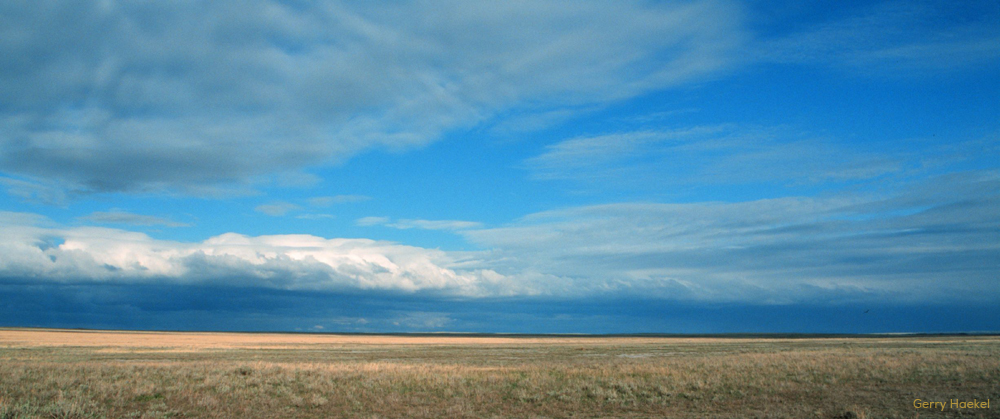
The Grassland Natural Region
Native prairie ecosystems are found in the Grassland Natural Region of Alberta. While native prairie often refers to grasslands, there are other important pieces of the prairie ecosystem, such as badlands, wetlands, streams, ponds, coulees and river valleys.
The Grassland Natural Region is further divided into four sub-regions based on climate, soil and vegetation – Dry Mixed Grassland, Mixed Grassland, Foothills Fescue and Northern Fescue:
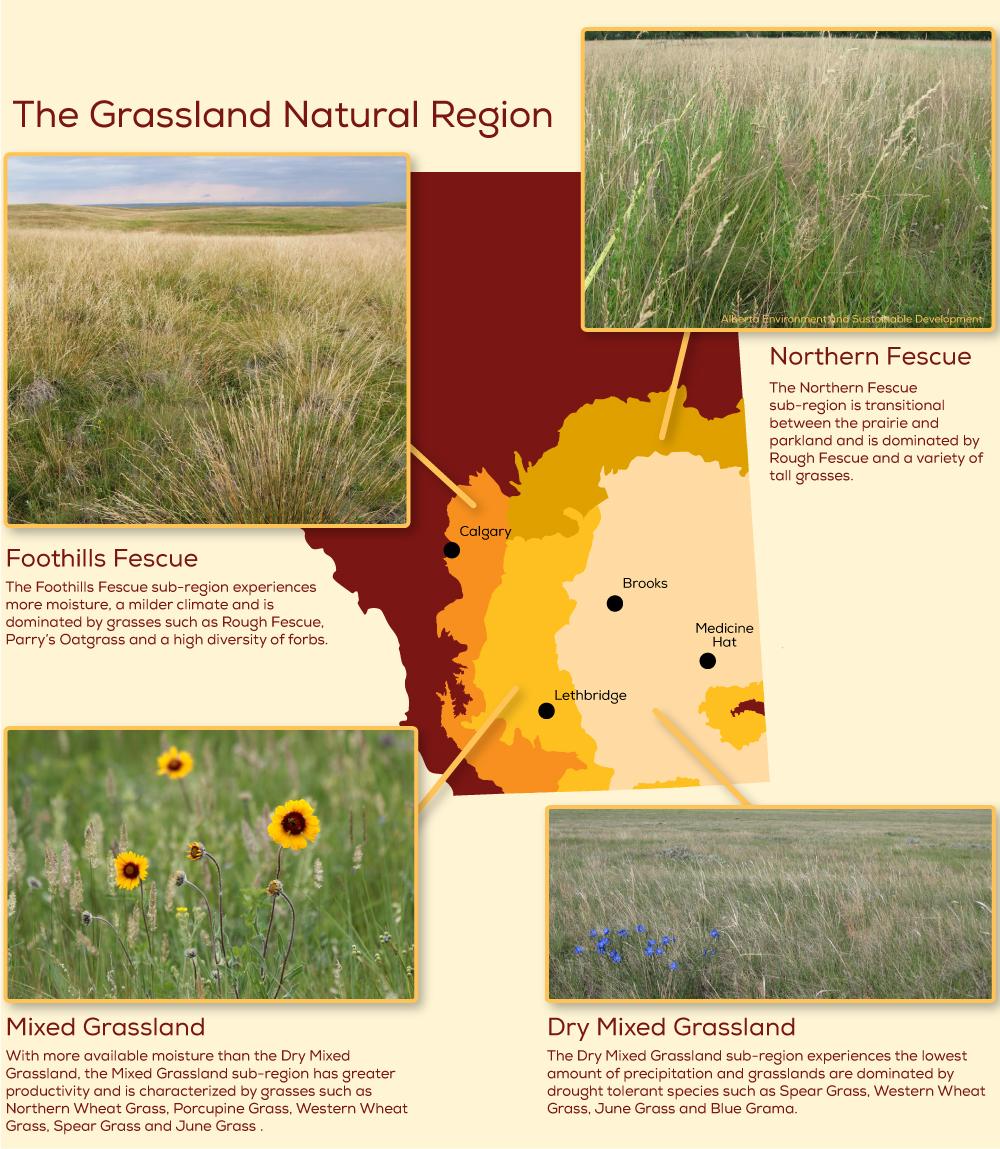
More information about Alberta’s Natural Subregions can be found here.
To find out more about native prairie, visit the Prairie Conservation Forum’s website
Identifying Prairie Plants
Common Coulee Plants of Southern Alberta from the University of Lethbridge
Common Plants of Western Rangelands:
Volume 1 – Grasses and Grass-like Species
Volume 2 – Forbs
Native Plants and Reclamation guides available from Alberta Agriculture and Forestry
A Field Guide to Common Riparian Plants in Alberta from Cows and Fish


